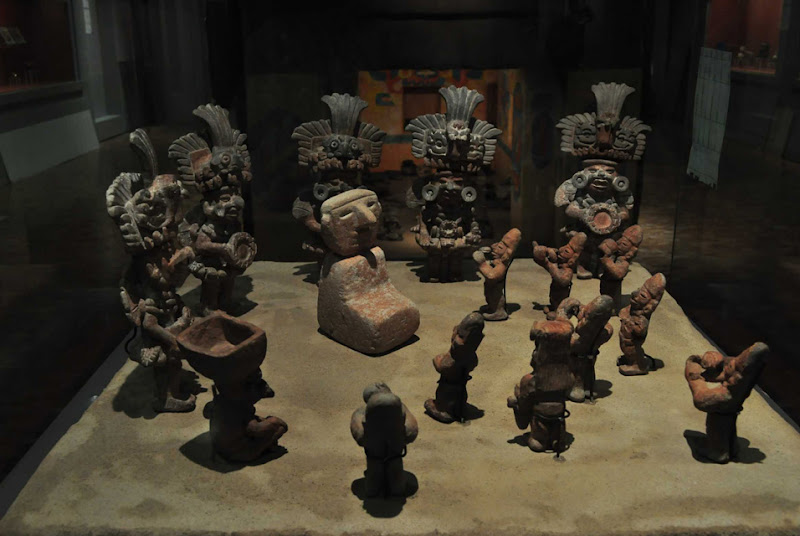
Artwork that dates from 5th century BC, part of heaps of the National of Anthropology, Cultures of Oaxaca and Monte Alban Site museums, part of the INAH museums network, is exhibited at the section dedicated to the Central Valleys of Oaxaca cultures.
Doctor Martha Carmona, curator of this section of 6 Ancient Cities of Mesoamerica remarked that the testimonies of the earliest urban settlement of Mesoamerica maintained the Zapoteca hegemony for 1,250 years, from 500 BC to 750 AD.
“Monte Alban was always a sacred and important city. Besides being the first Mesoamerican state that held centralized power, enduring for centuries”, added the expert.
The slabs that represent the power of its rulers welcome visitors to the hall. The first one dates from 200-600 AD and comes from Building J. This stone show a lord, possibly 1 Earthquake carrying a mask of the rain deity and holding a jaguar head with his hand, symbolizing the sacrifice and beheading of a high-rank enemy.
The other slab, created between 500 and 150 BC, formed part of the façade of Building L and depicts an important warrior bleeding his genitals in a ritual: At the opposite side, there is another character, inverted, apparently it is a draft abandoned due to a writing error.
Other relevant masterwork part of the Museum of Oaxaca Cultures is the Cuilapan Scribe, created in the Pre Classic period as well. It is a ceramic masculine figure that stands out for its nakedness and sobriety, presenting dental mutilation, characteristic of the elite.
At Monte Alban, even genealogies were represented in clay vases, such as in pieces that towards 6th century were offered under a structure at the center of the main architectural conjunct of Atzompa. Each of them has engraved a calendar name: 5 Lord, 1 Jaguar, 5 Lizard, 13 Monkey, 2 Eye and 2 Maize; apparently it was a lineage founded by 5 Lord, which had great influence in a wealthy age of the city.
For Martha Carmona, researcher at the National Museum of Anthropology (MNA), Monte Alban can be defined as “the city of the tombs” because they were incorporated to domestic architecture; in the case of the ruling class, they were built under their palaces.
Due to this main characteristic of the Prehispanic settlement, it was decided to recreate the Tomb 104 (500-800 AD) with its façade composed of cornices, moldings and a tableau of double scapular that replicates architecture of the city. At the offering stand out 5 pieces placed at the foot of the departed: at the center Cocijo, deity of thunder, with his 4 companions related to the clouds, wind, rain and hail.
Other piece discovered in a mortuary context that dates from 100 BC to 200 AD is the emblematic mask of the Bat God, part of funerary attire. In 1999 the mosaic created with more than 25 pieces of greenstone, 6 of shell and 3 slate pendants, underwent integral restoration.
A skull dated between 200 and 600 AD with cranial deformation and trepanation is also at display. Most of perforated skulls founs in Mesoamerica come from Monte Alban.
Martha Cardona explained that Monte Alban developed in a strategic defensive location at the top of Jaguar Hill, which was leveled by Zapoteca architects to trace the sacred space parting from a 300 by 200 meters platform.
A century after Zapoteca culture dominated the city, Mixteca people reoccupied several spaces, leaving valuable testimonies such as polychrome ceramics and meticulous golden artwork.
A unique piece at 6 Ancient Cities of Mesoamerica is golden lip ornament found at Tomb 7, which represents a Cocoxtli bird, identified with Xochipilli Macuilxochitl. The artisan founded the piece and mounted the bird carved in jade.
Martha Cardona concluded saying that the Monte Alban hall accounts for the great scientific and art advances of an early city that still hides secrets that must be discovered by specialists.
Source: Art Daily [March 28, 2011]